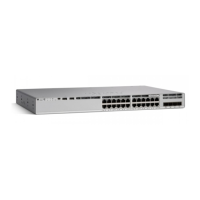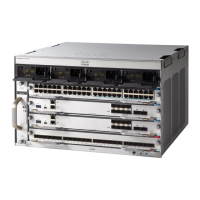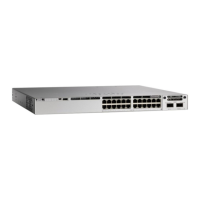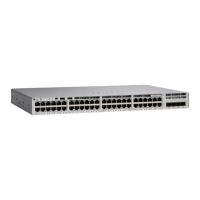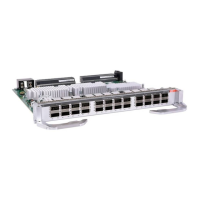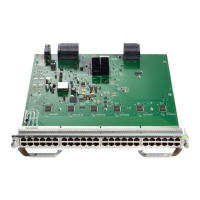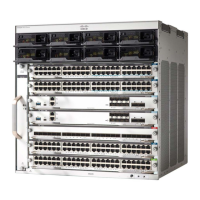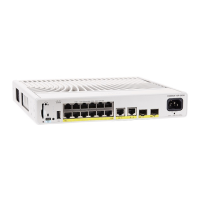building mechanism in PIM-SM. MSDP is also used to announce sources sending to a group. These
announcements must originate at the domain’s RP.
MSDP depends heavily on the Border Gateway Protocol (BGP) or MBGP for interdomain operation. We
recommend that you run MSDP in RPs in your domain that are RPs for sources sending to global groups to
be announced to the Internet.
MSDP Operation
When a source sends its first multicast packet, the first-hop router (designated router or RP) directly connected
to the source sends a PIM register message to the RP. The RP uses the register message to register the active
source and to forward the multicast packet down the shared tree in the local domain. With MSDP configured,
the RP also forwards a source-active (SA) message to all MSDP peers. The SA message identifies the source,
the group the source is sending to, and the address of the RP or the originator ID (the IP address of the interface
used as the RP address), if configured.
Each MSDP peer receives and forwards the SA message away from the originating RP to achieve peer
reverse-path flooding (RPF). The MSDP device examines the BGP or MBGP routing table to discover which
peer is the next hop toward the originating RP of the SA message. Such a peer is called an RPF peer
(reverse-path forwarding peer). The MSDP device forwards the message to all MSDP peers other than the
RPF peer. For information on how to configure an MSDP peer when BGP and MBGP are not supported, see
the Configuring a Default MSDP Peer, on page 28.
If the MSDP peer receives the same SA message from a non-RPF peer toward the originating RP, it drops
the message. Otherwise, it forwards the message to all its MSDP peers.
The RP for a domain receives the SA message from an MSDP peer. If the RP has any join requests for the
group the SA message describes and if the (*,G) entry exists with a nonempty outgoing interface list, the
domain is interested in the group, and the RP triggers an (S,G) join toward the source. After the (S,G) join
reaches the source’s DR, a branch of the source tree has been built from the source to the RP in the remote
domain. Multicast traffic can now flow from the source across the source tree to the RP and then down the
shared tree in the remote domain to the receiver.
Routing Configuration Guide, Cisco IOS XE Everest 16.6.x (Catalyst 9500 Switches)
26
Configuring MSDP
MSDP Overview
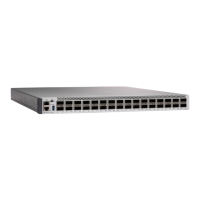
